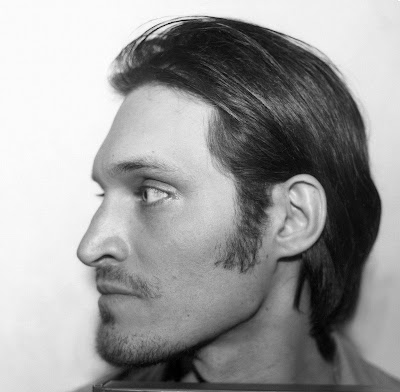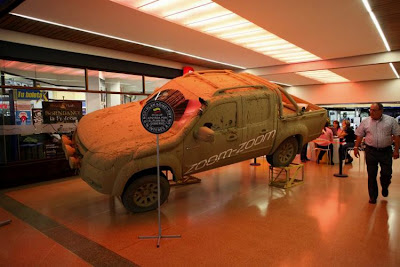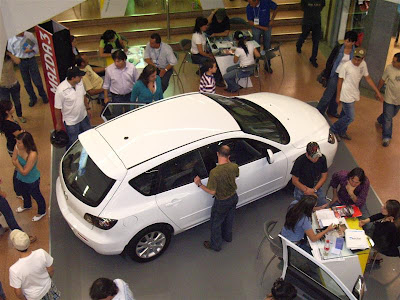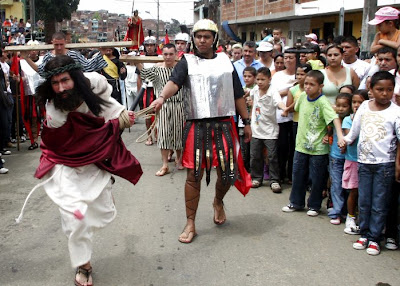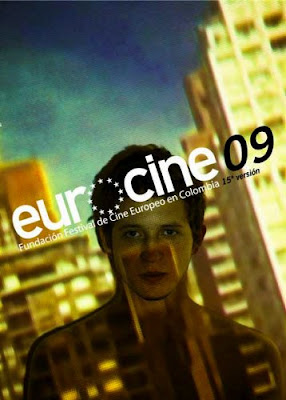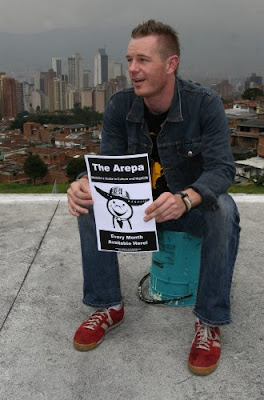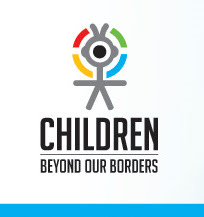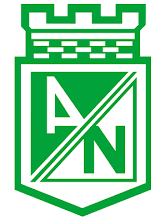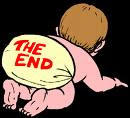 In Memoriam of Paul BardwellThe Good Gringo -- The Story of Paul Bardwell
In Memoriam of Paul BardwellThe Good Gringo -- The Story of Paul Bardwell
by Randolph T. Holhut HATFIELD, MA -- At a time when most of the world views the United States with a mixture of fear and disgust, it is necessary to remember that not every American is ugly, and many people out there are working to promote the best values of our country.
We lost one of those people on Nov. 29. His name was Paul Bardwell and he died of cancer at the age of 49 in a country he loved dearly - Colombia.
It is a unlikely story - the eldest son of a Yankee family that traces its lineage in this little New England town to the Colonial era, becoming a revered figure in a South American country that Americans only think of as a place of cocaine and violence. But it is a story worth telling, because it shows that the best diplomacy comes from the people, and that art and culture can build more bridges than guns and tanks ever will.
Hatfield is my home town, and I came back on Jan. 15 for a memorial service for Paul. I know his family well, and his accomplishments were a constant source of pride to them all.
In the back parlor of the Congregational Church, the family posted a map of the world. They surrounded it with blowups of pages from nearly 30 years of Paul's passports, and they put a push pin in every country he visited - 88 in all, on every continent except the poles.
Paul loved travel, but of all the places he went, he loved Colombia the best. He first arrived there in December 1977. He had just graduated from Gettysburg College, and he and his brother Jonathan decided to take a bus-and-train trip through Mexico and Central America. Their journey ended in Medellin, the Andean city that would become synonymous with drug trafficking a decade later.
Paul fell in love with Medellin and its people. He immersed himself into Colombian life. He moved there and never returned to Hatfield.
In 1979, he started working for the Colombian American Bi National Center - or the Colombo Americano, as the locals call it - a private, non-profit, locally-run organization devoted to cultural and academic exchange between the United States, Colombia and the rest of the world. The Colombo accepts no government money and is very protective of its independence.
By 1983, Paul was the Colombo's director, and the center had been transformed from being primarily an English language institute to a cultural center and meeting place for the people of Medellin.
"Paul Bardwell was always convinced of one thing: that people always wanted to know more and that he was going to respond to that need," wrote the Medellin newspaper El Colombiano after his death. "He was never wrong about that. ...(He) always said, 'Culture is about what we speak, live, eat and express.'"
Not even terrorism could shake that vision. On April 14, 1988, guerrillas from the M-19, a leftist terrorist group, set off a 90-pound bomb that destroyed the Colombo's library. Instead of seeing disaster, Paul saw opportunity. He rebuilt the library - now the largest bilingual library in the city - within a matter of weeks. He then continued to make the Colombo a focal point of culture by opening up a pair of movie theaters, a restaurant and an art gallery.
He kept the Colombo in downtown Medellin at a time when many of its institutions were fleeing. He gave the art film scene a boost by helping start up a magazine,"Kinetoscopio." He pushed the artistic boundaries of the Colombo as far as he could, bringing the art of his adopted city to the rest of the world. He routinely worked from sunrise to sunset. His Yankee stubbornness and work ethic, combined with his love of life and culture, made him an unstoppable force.
That Paul Bardwell managed to accomplish so much in a country wracked by a four-decade long civil war that has killed more than 40,000 people, a country that's the third largest recipient of U.S. military aid (after Israel and Egypt), a place that has become the most dangerous nation in the Western Hemisphere, is nothing short of a miracle.
Paul got a funeral worthy of a head of state in Medellin. His body was laid in state in the first floor atrium of the Colombo. After the funeral service there, his coffin was carried out amid a long and loud roar of applause mixed with tears for the man they called "The Good Gringo."
Just before his death, Medellin presented Paul with the Porfiro Barba Jacob Medal, the city's most prestigious cultural award. Juan Diego Mejia, the city's secretary of culture, called him, "The Best Plan Colombia," a subtle swipe at the U.S. military aid program that has poured billions of dollars into Colombia over the past decade as part of the "war on drugs."
In diplomatic circles, the phrase "soft power" often comes up. It refers to the use of methods other than military force to achieve geopolitical influence. One can say that Paul Bardwell's use of art, cinema, dance and literature was soft power at its best. But he wasn't doing it at the behest of the United States or to advance its interests. His country truly was the world, and he believed to his dying day that building bridges between all cultures was the most important thing anyone can do.
There are many people in the Americas who will make sure Paul Bardwell's work will be carried on. The Gallery of the Centro Colombo Americano will be renamed the Paul Cory Bardwell Gallery at a Feb. 10 ceremony in Medellin. There are also plans in the works to start up a foundation to continue, in the words of gallery director Juan Alberto Gaviria, "the ideals which (Paul) devoted all his life, to use art as an instrument of peace among nations."
That ideal - using the arts as an instrument of peace - is about as good a monument as one can hope for when one's life is through. If a new tradition of peace and understanding can take root in the world, it will be people like Paul Bardwell that make it happen.
For more information on the Centro Colombo Americano, visit
www.colomboworld.com or call (57-4) 513-4444.
_______________________________________________________
En Medellín hablar del Centro Colombo Americano es hablar de cultura, educación, intercambios, internacionalización y compromiso local. Es una institución que se ha caracterizado por dejarle a la ciudad un abanico de ofertas educativas y culturales, que la han convertido en un patrimonio social para los medellinenses.
Desde el arte, el Centro Colombo Americano trabaja constantemente por mostrar las nuevas tendencias y llevar el arte a escenarios sociales donde no tiene presencia y así incentivar su estudio y trabajo.
Y este trabajo puede conocerse en las diferentes exposiciones y muestras que se realiza en la galería principal de su sede en el Centro de Medellín: la Galería de Arte Contemporáneo Paul Bardwell.
La Galería fue fundada en 1985 y desde entonces no ha parado de apoyar y difundir la obra de innumerables artistas nacionales e internacionales preocupados por los problemas de la sociedad.



